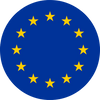 o.T. (Hemd), ca. 1991
o.T. (Hemd), ca. 1991
It’s surprising, the way an artist finds his themes and his world—the things that allow him to become a true creator. Many never do, and remain eternal imitators of the topics, forms, and obsessions of others. In a fascinating conversation with Russell Ferguson, Thomas Demand explains that he was still a young art student in London in 1992, at Goldsmiths, the school where Damien Hirst was educated and where Demand obtained a scholarship after having attended art academies in his native Germany. Previously, he had studied art because it constituted the atmosphere he lived in at home; both his parents were artists, but above all artisans, makers of instruments and sacred objects for churches. Thomas did not yet know what sort of artist he would be. His professors treated him kindly and saw qualities in him he himself did not perceive. And then, one fine day, without knowing how or why, he began using pieces of paper to construct realistic objects. And even in this inexpensive medium, he was able to reproduce objects from the reality closest to hand, which stood out for the bright, almost aggressive colors in which they were painted. Thomas did not, I repeat, know where he was going, but his intuition told him there was an open road here he should pursue. And right away, he was convinced that these objects must be photographed.
At the time, Thomas Demand knew nothing about photography. His first attempts at portraying his objects were inept, revealing, more than anything, his inexperience with the camera. He had to study in depth the technique itself and the great living tradition of art photography that Walter Benjamin had described with such talent. As he did so, Thomas Demand, without yet realizing it, developed into one of the great masters of contemporary artistic photography. By this point, he had clear ideas about what he was producing. The paper objects his cameras immortalized would need to be destroyed immediately after the camera captured them, fixing an image of them that did not always correspond exactly with their reality. Why? For a very simple reason: those objects were questions Thomas formulated in manufacturing them, and he generally found the answer in those images. He says it was at this time that he began to study philosophy and that the work of two thinkers aided him greatly: Bertrand Russell and Ludwig Wittgenstein.
 Detail VII, 1997
Detail VII, 1997
Just ten years later, the images of his compositions would circle the globe, and Thomas Demand would be one of the most admired and controversial contemporary artists. Those modest paper figures had evolved into complex constructions that at times required Demand to seek the aid of architectural studios, though without ever ceasing to respect the principle that the models would necessarily be destroyed once they were photographed, leaving only the images of themselves behind. His initial idea took on a number of new facets. For example, many of the models were suffused with historical resonances; in one emblematic case, an image of a room in ruins recreated the space where Hitler was target of a major assassination attempt, when Colonel Claus von Stauffenberg brought in a concealed bomb and hid it under a table. Another example, less important in historic but not in human terms, is the bathroom where a notorious murderer committed suicide: in the image, all that appears is a fragment of the bathtub where he ended his life. The establishment of a secret relationship between images and historic facts or the detritus of everyday life hints, according to Demand, at the ever-present intimacy between the artistic object and human experience, however much it may lie concealed.
These images of fabricated objects do not mark the limits of Thomas Demand’s art. He projects himself in other ways, in other forms, with nature often very present. For instance, in the Daily Flower Report, a product of the author’s stay in California. For an entire year, 365 days, Thomas Demand would photograph a flower and post it on the net. The end product is a beautiful calendar, one of the loveliest artworks I have held in my hands, and one of those most stimulating to the imagination. The flowers that appear in this calendar look fabricated, but they are not. They express the natural world and the transformative gaze of the artist and of the camera he uses to interpret the diversity and richness of nature. No one would ever say the artist who designed those geometric objects for which he has been so highly praised is the same one who turns, with such tenderness and joy, an almost scientific eye on tiny roots, stems, blossoms, even air currents in the natural world. And yet the same hand is there in those realistic objects and these surreal images of nature, and with it is driven by the same obsession: the understanding that art cannot separate itself from human realities, which it enriches and justifies.

This is, I believe, the first time an exhibition of Thomas Demand’s work has been presented in Spain. May the Spanish receive it with the attention and admiration it deserves.
Extracted from Mundo de Papel by Thomas Demand. Translated by Adrian Nathan West.

ISBN 978-1-913620-52-3





